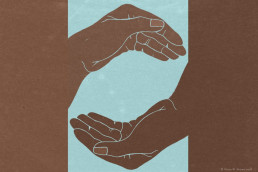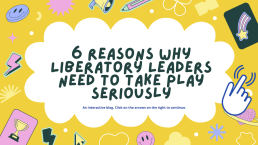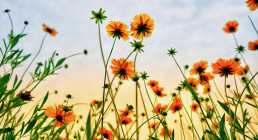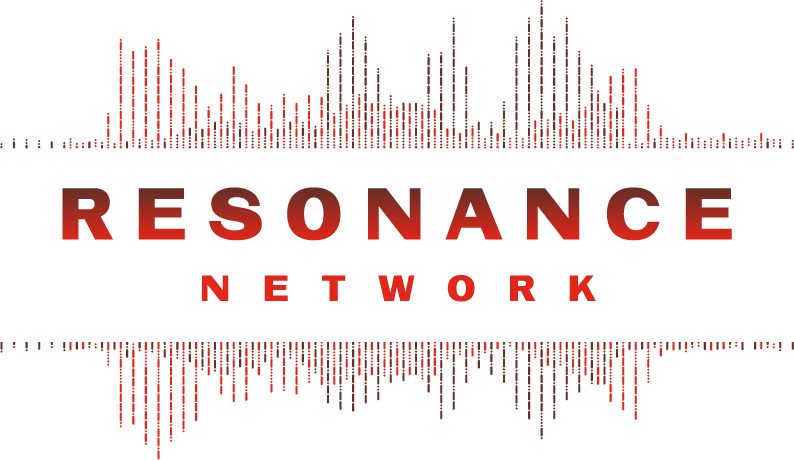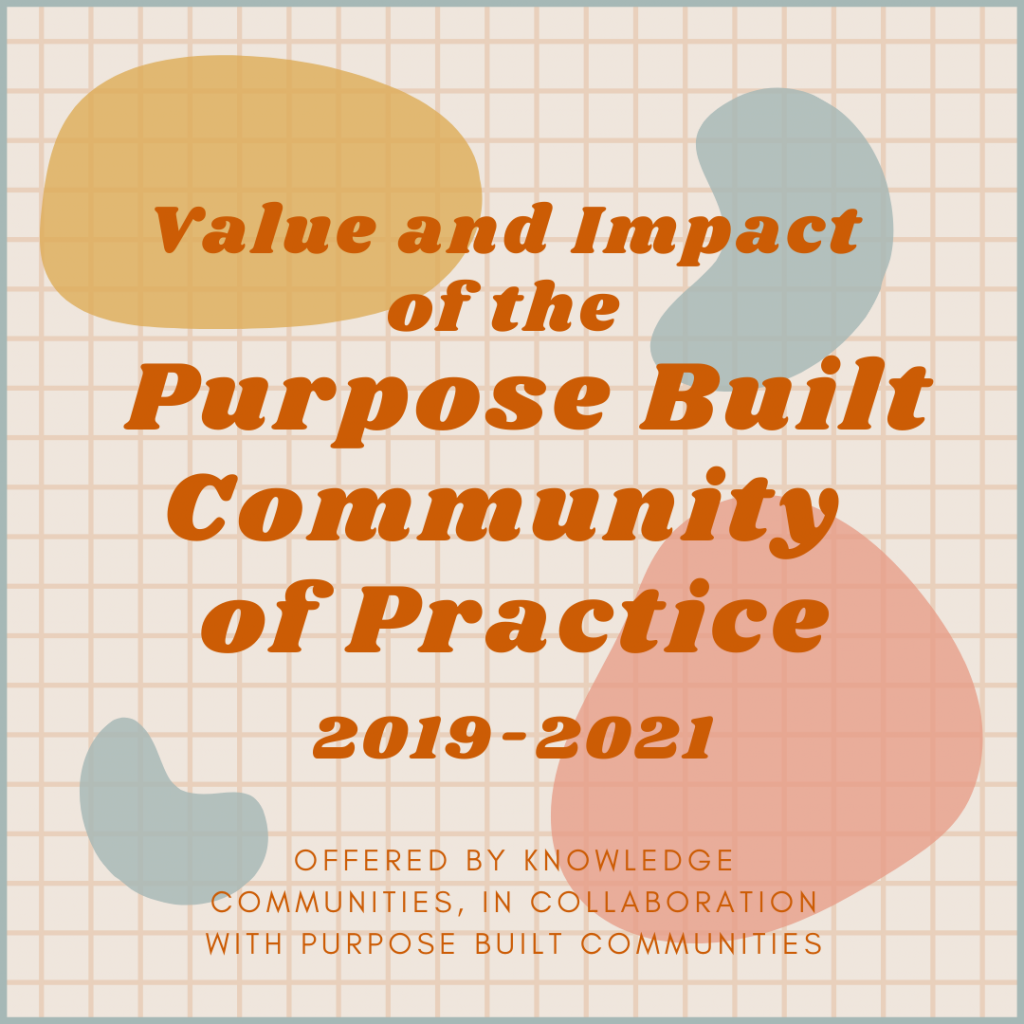Five Calls-to Action from the 2022 Facing Race Conference
What happens when thousands of racial justice leaders and practitioners come together after a pandemic? So much power and knowledge-sharing – and plenty of dancing and hugs, and even a few martinis!
At the 2022 national Facing Race Conference in Arizona, sponsored by Race Forward, participants were graced with gratitude for their work for racial justice, invited to be even bolder in our approaches, and instructed to avoid internal implosions at a time in which our organizations and the movement are needed the most.
I heard five important calls-to-action:
- Backlash Means We’re Winning. Keep Going!
We’re winning! The number of people of color leading and pushing change in institutions is at its highest levels. We see movement wins such as the growing people of color electorate and the halt of the Keystone pipeline. The use of the word “systemic racism” is now commonplace. We were encouraged to keep pressing forward and harder to break through on our biggest ideas. Opening plenary speakers said, “Fight for your impossible idea… and let us dream and fail.”
- Get out of Isolation. It’s Time for Reconnection!
We’ve become accustomed to quarantine and staying close to home but we were encouraged to move out of our comfort zones. Specifically, we were reminded to talk to people at their doors and to bring them back into protests and visible organizing. One speaker said, “we have to retrain people, including ourselves, to interact again, especially in person and in public.” At IISC, our mission is creating skills for collaboration and interaction. We’re exploring how we can enter and hold physical spaces with care while still centering those at risk from COVID through an equity and disability access lens.
- Don’t Underestimate White Nationalism. Expose and Bring it Down!
As distinct from the ideology of white supremacy, white nationalism is coordinated and direct action fueled by hatred and violence. Organization-building to support white racist and anti-semetic attacks and violence is on the rise and getting very sophisticated. From Boston to Michigan and Florida, leaders pointed to overt and well-organized actions in their communities from white nationalist organizations. They encouraged us to work with community organizations, government leaders, and neighbors to develop strategies to prevent their inroads and to frame messaging to drown out their discourse.
- Stop Internal Organizational Implosions. Build Organizations on Soul Work!
We heard a loud and clear call for each person inside an organization to take responsibility for extinguishing the internal fights we are waging against each other so we can focus on the external fights for justice. No organization, person, or leader is perfect so we can’t cast each other to the curb in punitive and harmful ways, stay in victimization, attack each other, and fall into gossip. They asked us to build our organizations so people can do their soul work and be liberated to do work with joy and happiness.
- Move Forward. Live into Possibility!
I was struck that you barely heard the name “Trump” around the conference. The focus was on moving and organizing for what we want and imagine. Not that we don’t pay attention to the war on our democracy and progressive values but that we go in the direction of creating even more conditions for change and living good personal lives as we do it. IISC held a workshop at the conference on fighting the return of the old normal by envisioning and leading for liberatory systems and racial justice transformation. We produced a resource guide to help you and other organizations do that while attending to the current challenges before us. Check it out.
In summary, we have power, we’re winning, and we need to reconnect and get our own house in order. Now that’s a push we at IISC appreciated and definitely needed, and maybe you feel that way, as well. We hope to see you at the next Facing Race conference in 2024.
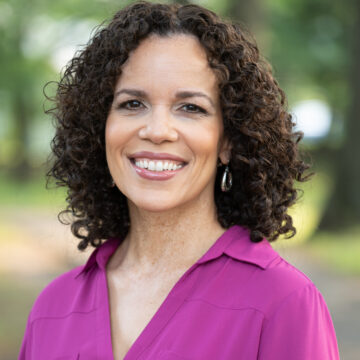
As president, Kelly Bates (she/her) leads the strategic direction of Interaction Institute of Social Change and supports its dynamic and diverse team of consultants and trainers to meet the organization’s highest aspirations for social change and racial equity.
Kelly is a social changer, nonprofit civic leader, and lawyer who for more than twenty-five years has led advocacy, organizing, racial justice, and women’s organizations promoting collaboration, equity, and civic engagement, both locally and nationally. She strives each day to develop and embody the heart, skills, and mindset of a facilitative leader and civic innovator for progressive movement building across the country and in communities.
originally published at Interaction Institute for Social Change on December 13, 2022

Network Weaver is dedicated to offering free content to all – in support of equity, justice and transformation for all.
We appreciate your support!
donate in the box above or click here
Creative Freedom for True Equity
Equity is often discussed, but rarely understood in a context that speaks to the core challenges of people who are under-represented in race, religion, gender, socio economic status or who may be geographically excluded and differently abled. In particular, the necessary experiences and spaces for communities within rural Texas are just beginning to receive the attention and resources required to spark conversation and change. Paying homage to deep rooted history and lineage of community members is essential for Black communities in Bastrop County, Texas (and beyond). In Bastrop, home to 13 original Freedom Colonies, the untapped power of equity-for-all lies in the centering of Blackness. In order for our society to evolve, it is imperative to recognize Black America's contributions and sacrifices as a strategy towards equity for everyone. This has been the primary focus of my personal work, which aspires to bring about social change for all.
Grappling with the core roots of exclusion and inequity, Network Weaving helps to build a framework for connection, access, support and consistent learning– a critical necessity for many who have generational ties to this local land. In Central Texas, approaching community organizing from a network weaving paradigm has supported an evolving model of rural mental health equity in many ways by building on existing culture of community-led organizing. By providing resources for gatherings and trainings for local community leaders, network weaving has become a pillar of support for the work already being done by many on-the-ground community members of these rural networks.
As a weaver, the support of this network and the ability to work collectively and autonomously alongside like-minded people has helped me develop the courage to continue down the path of creating safe spaces for Black women and Black boys. While they continue to be challenged by those who rarely experience the feeling of being othered, safe spaces continue to be places where, as Kelsey Gladwell writes, “we can simply be — where we can get off the treadmill of making white people comfortable and finally realize just how tired we are. Valuing and protecting spaces for people of color (PoC) is not just a kind thing that white people can do to help us feel better; supporting these spaces is crucial to the resistance of oppression.”
After the George Floyd Protests, people began coming to us, as community leaders to shoulder the burden of anti racist organizing, but as a mental health clinician, I saw that my community required a more communal approach that centered their mental, spiritual, ancestral and physical health. This led me to co-create a series of social wellness brunches for Black women in central Texas, a podcast about centering community voices in healing, and the Bastrop County Black Boys Collective which aims to nurture their innovation through connection with other boys and men.
Resistance has been the bedrock to creating safe spaces for local black communities, and it has often been misunderstood as an exclusionary act. Finding the courage, self-love and dedication to create from a vulnerable place has been an emancipating experience, making it hard to return back to “business as usual.” My vision and purpose, as I reflect on my life thus far, are to find ways to enhance freedom and liberation for like-minded communities. To get to this creative utopia, I often reflect and ask myself;
- How can I continue to create spaces for renewal, healing, safety, trust and belonging?
- Who understands and can support this desire for creative freedom?
- What are my strategies to unearth the core stories around me that have led to freedom and prosperity for rural Black America?
- How can we as a collective redefine “success” to allow space for our inherent goodness?
- Where and how can I build upon my connections to others dedicated to liberation?
Through my partnership with the network weaving community since 2019, I’ve been able to form lasting relationships to other community organizers, writers, and social change agents who also see a path towards healing for the communities in which they identify. Weavers are a set of individuals looking to bring attention to the causes that they are most passionate about. Working with advocates and activists dedicated to equity initiatives has been confirmation that we have much more work to do but…I am not alone.
As a Black woman, Mother, mental health strategist, and safe space creator, I’ve been able to carve out a path of healing with my community. These experiences have enabled me to have a clear awareness of those around me and the resources needed to build upon a framework of freedom, liberation, reciprocity and resilience while redefining my understanding of self within the totality of my community.
The thought-leaders within the network have remained bold, focused on serving all populations and dedicated to creating a system of social entrepreneurs with the belief that social entrepreneurship which honors the lived-experiences of community leaders and disruptors is the catalyst towards rural social and political change.
We are innovators and creators. My legacy will be the creation of a physical space for healing, freedom, and creativity for the under-represented. As an act of rebellion and love, weaving through my social change work has helped to heal my battle with power by stepping into my potential as a Network Engine, connector and artist. Weaving has become an important aspect of reclaiming my right to connect and create with like-minded individuals. I’ve already begun to witness the shift in our local narrative, relying on the voices, contributions and vast experiences of the black community.
The function, the profoundly serious function, of racism is distraction. It keeps you from doing your work. It keeps you explaining, repeatedly, your reason for being. - Toni Morrison
Krystal Grimes, M.S., LPC is the President and Founder of AMMA Empowerment Services, LLC. Krystal is recognized regionally and internationally as a safe space creator and mental health strategist. Through an intrinsic ability and desire to support others, Krystal has positioned herself as a local convener and facilitator for healing and diversity initiatives, supporting the creation of inclusive and brave spaces for dialogue and innovation.
featured image by Alicia W. Brown

Network Weaver is dedicated to offering free content to all – in support of equity, justice and transformation for all.
We appreciate your support!
donate in the box above or click here
6 Reasons Why Liberatory Leaders Need to Take Play Seriously

When was the last time you played, did something just because it was fun and felt good? Did you finish feeling enlivened, relaxed, energized, or something similar? Leadership Learning Community has been exploring the roles of fun and play in our activities. This exploration didn’t start out super intentional, but rather as a reaction to the pandopalypse we’ve all been living in. Over time LLC began discussing play in relation to our work, referring to aspects of our work as “playful” or describing meetings and convenings as “play spaces.” For us, this isn’t a cutesy communications strategy. As LLC began to turn our attention to play, we realized that play, when grounded in collective purpose and steeped in values, can be a liberatory act.
Here are six reasons why we believe play can help leaders embrace liberatory practice.
Fuel Ideation
- Play can be described as “something that’s imaginative, self-directed, intrinsically motivated and guided by rules that leave room for creativity.” By creating space for creativity and imagination, play helps to quiet the self-conscious, judgemental inner critic. This voice discourages deviations from the known norm and makes trying on new things feel too risky. Without that voice, perhaps there is room for a little bit of magic to invite in new possibilities. Taking a playful stance allows us to adopt a child-like or beginner's mind, and helps us to develop mental plasticity and adaptability while simultaneously reminding us that our options aren’t all pre-determined and that there is space for the not yet known. This opening of possibility is critical as liberatory transformative efforts are dreaming and imagining into being something that does not currently exist. To do that, we have to stretch our imagination muscles.
- Practice: Start the meeting with a playful check-in question like, “If you could go back in time (or to the future), who would you want to meet?” or pick a favorite zoom filter to start the meeting with. Check out more of our check-in questions here.
Nurture, Healing & Wellness
- Play is an effective way to manage stress and can be a tool of both self and collective care. Play helps us to be in the moment, similar to meditation. In contrast to oppressive practices, which are confining and restrictive, sapping our spiritual and figurative energy; the enlivening nature of playful activities may help to heal these wounds.
- Practice: Host meetings near a park, the ocean, or in nature. Take a walk. Find new analogies for the work we do.
Create New Models of Strategic Thinking
- Playing makes things real, during play we don’t just imitate we also imagine and embody (something). Trying on liberation in play spaces/playful ways allows us to feel the benefit of liberation in the moment while we are learning more than we currently know. This focus on liberation now means that during play liberation doesn’t just have to be a future goal. In addition, some studies suggest that play supports memory and thinking skills, so play may literally help us think our way to freedom.
- Practice: Do some creative writing. Some of us have and are taking a writing course with Dara Joyce Lurie. She shares a quote from Edward de Bono, “Rightness is what matters in vertical thinking. Richness is what matters in lateral thinking. Vertical thinking selects a pathway by excluding other pathways. Lateral thinking does not select but seeks to open up other pathways. With lateral thinking one generates as many alternative approaches as one can. With vertical thinking one is trying to select the best approach, but with lateral thinking one is generating different approaches for the sake of generating them.”
Expand Leadership Opportunities
- Because play utilizes “creative rules” that are distinct from the rules and restrictions of regular life, in play, there exists the opportunity, though not the requirement, to separate capacity from expertise. All of a sudden, players “can” do things even if they aren’t experts at said activity. So you can play at being a pilot without actually knowing how to fly a plane. In playful spaces more people can function as leaders, meaning more people can be actively involved in imagining liberatory practice into being.
- Practice: Acting and improvisation exercises like “Questions Only” where you act out a scene given to you with only questions.
Build Community:
- Play offers us the opportunity to connect. When we create safe play spaces there is little risk to engaging. People can show up with a less performative stance. BIPOC leaders frequently find themselves under a spotlight or a microscope. The labor of being forced to code-switch or deal with being othered is exhausting so I imagine that BIPOC leaders especially are eager for safe spaces to be themselves. Where showing up as one’s whole self is an invitation and a demand, and for the purpose of supporting the BIPOC leader not to be of utility to others. Often BIPOC leaders are told to show up as their full self because observing BIPOC leaders is good for an observer, not for the benefit of the BIPOC leader.
- Practice: Shorten the strategic side of the meeting, and incorporate the karaoke, fun, and games as part of the meeting, not just extra at the end.
An Invitation to Wholeness:
- By allowing us to focus on pleasure and fun rather than objectives and outputs, play encourages us to be more than what we can produce. Perhaps play is akin to rest in that way, and maybe we can view embracing the revolutionary possibility of play in the same way that we have begun to respect how rest can be resistance. This need for play spaces may prove to be especially important for BIPOC leaders given that kids of color are often adultified early, and deprived of the space to play freely. By recapturing play, as we have attempted to reclaim rest, we may enliven our work and find new paths toward liberation.
- Practice: Make space for play at every meeting whether it’s a check-in, the location, the activities, or the bonding event. Make play and joy part of your community agreements so they show up intentionally during your work.

Ericka Stallings is the Co-Executive Director of the Leadership Learning Community (LLC) a learning network of people who run, fund and study leadership development. LLC challenges traditional thinking about leadership and supports the development of models that are more inclusive, networked and collective. Prior to LLC, Ericka was the Deputy Director for Capacity Building and Strategic Initiatives at the Association for Neighborhood and Housing Development (ANHD), supporting organizing and advocacy and leading ANHD’s community organizing capacity building work.
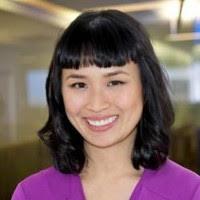
Nikki Dinh is the daughter of boat people refugees who instilled in her the importance of being in community. Though she grew up in a California county that was founded by the KKK, her family’s home was in an immigrant enclave. Her neighborhood taught her about resistance, resilience, joy and love.
originally published at Leadership Learning Community
Network Weaver is dedicated to offering free content to all – in support of equity, justice and transformation for all.
We appreciate your support!
donate in the box above or click here
by Ericka Stallings and Nikki Dinh, co-executive directors of Leadership Learning Community
A Future for All of Us
AN EXCERPT FROM RACE FORWARD'S REPORT ON PHASE 1 OF THE BUTTERFLY LAB FOR IMMIGRANT NARRATIVE STRATEGY
IN 2018, DURING THE HEIGHT OF THE TRUMP ADMINISTRATION’S attacks on migrants, immigrants, and refugees, a landmark study warned pro-immigration forces that “attitudes towards immigrants and immigration are extremely complex: even those who appear to be pro-immigrant (who even think of themselves as pro-immigrant) are often very conflicted.”
A majority of Americans support the idea that migrants, immigrants, and refugees deserve to belong and thrive. Many recoiled from horrific images of family separation, violence against migrants at the border, and white nationalist violence against immigrants in cities like El Paso. Yet when the country locked down under the threat of the coronavirus and the Trump administration nearly shut down the entire immigration system, too few stood up to challenge these severe policies.
How does the pro-immigrant movement begin to confront such contradictions? To begin to answer this question, it might be better to look not to the tools of policy in the realm of traditional politics, but the tools of narrative in the realm of culture.
Cultural change precedes social change. Narrative drives policy. This is why we must be as strategic and rigorous in building narrative power as we are in building all other forms of power. Narrative is the space in which energies are activated to preserve a destructive system or build a better world for us all.
Right now, anti-immigrant forces continue to shape the dominant narratives around migrants, immigrants, and refugees, claiming that they are exploitable, expendable, criminal, and unworthy of equal treatment. These dominant narratives have fostered policies that terrorize migrants, immigrants, and refugees emotionally, economically, and physically. They protect a harmful status quo.
We are called instead to forge a new consensus. We must move a majority of people to imagine and act to create a world that does not yet exist. In order to make this world a reality, we need to orient ourselves toward the world we want to win, and make this future tangible and irresistible to a majority.
In this first phase of the Butterfly Lab for Immigrant Narrative Strategy, we hosted sixteen leaders to develop, test, and align narratives that meet our current political moment and advance our vision for the world we want to build. We supported their work with research,coaching, and funding. We were heartened by the many breakthroughs we made together.
Our work in the Butterfly Lab in this first phase affirms what we have known and gives us some directions to advance the movement towards more strategic alignment. We found:
• Nearly everyone believes immigrants deserve to belong and thrive.
• But many find it difficult to imagine an America in which that may be true.
• Core audiences respond well to all tested narratives, including those focused on shared humanity, compassion, dignity, and respect.
• But stretch audiences do not respond well to those aforementioned narratives. They do respond well to narratives of striving, responsibility, and liberty.
• Our narratives need to make sense of the past and present, and point toward immigration futures that are compelling to all.

Immigration remains the “third rail” of progressive politics. And yet, even in these discouraging times, we believe it is possible to win. When we look at the cultural transformations that other recent narrative movements—from “love is love” to #BlackLivesMatter—have made, we see pathways forward. Over a long period of time, many people built narrative infrastructures that could work in concert with policy infrastructures. When narrative power-building met the social moment, cultural inflection points turned policies previously thought unreasonable into ideas worthy of serious consideration. With immigration, we too must invest in narrative as key to winning power for migrants, immigrants, and refugees.
In this report, we share with you learnings, frameworks and tools, and insights into directions we can take to move forward together. Whether you are an advocate or artist, a long-time veteran of the culture wars or thinking about how to apply narrative or cultural strategy for the first time, this report is designed to work for you.
It is also designed to help you think and act at multiple scales—locally, regionally, or nationally—with rigor, alignment, and purpose. The best narrative strategy should foster a unity of intention with a diversity of voices, approaches, and methods. It should help people work together with a sense of alignment along different timelines and fronts. We want this report to be used to build skills, capacities, and networks within the movement, and, above all, to help all of us approach narrative strategically.
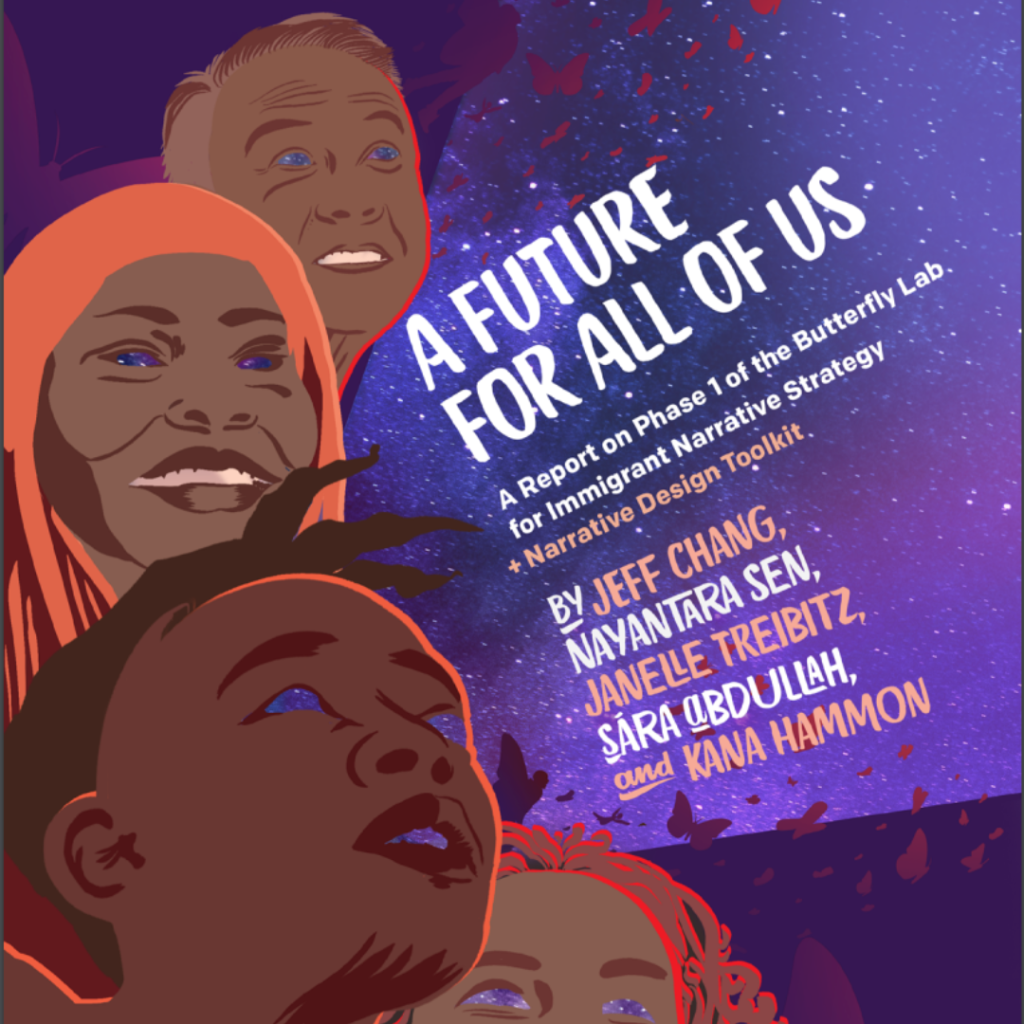
You can access the full report at Race Forward HERE or at Network Weaver HERE
You can also access a standalone version of the toolkit HERE

Race Forward catalyzes movement building for racial justice. In partnership with communities, organizations, and sectors, we build strategies to advance racial justice in our policies, institutions, and culture.
About the Butterfly Lab: Race Forward’s Butterfly Lab was launched in 2020 to build power for effective narratives that honor the humanity of migrants, refugees, and immigrants, and advance freedom and justice for all.
Network Weaver is dedicated to offering free content to all – in support of equity, justice and transformation for all.
We appreciate your support!
donate in the box above or click here
Belonging to ourselves, each other, and the earth
From decolonization to... re-indigenization?

I’ve found myself increasingly interested in the promise of ‘embodiment’: the possibilities inherent in the seemingly simple act of being attuned to what our bodies are telling us. Thus far I’ve explored that concept primarily through the lens of the self, of the ‘I.’ But there’s more to it than that, something that feels powerful.
So today I want to explore the transformative potential of learning to sense and feel at three different levels: what in Building Belonging we call the levels of “I, We, World.” The promise of belonging is the promise of integration: it’s about belonging to ourselves, to each other, and to the earth.
“All transformation is linguistic”… and embodied?
This topic is especially hard to think and write about clearly because we lack the language. It’s difficult to conceptualize something if we can’t name it (an insight made famous in Betty Friedan’s discussion of “the problem that has no name.”) It was perhaps with this in mind that Peter Block provocatively wrote “All transformation is linguistic.”
I think he’s right… and the sentiment is incomplete. I do think the power of naming something is itself a transformative act: it allows us to see things in a new light, to understand an aspect of our experience that had thus far remained inaccessible. As Robin Wall Kimmerer wrote:
Language is the dwelling place of ideas that do not exist anywhere else. It is a prism through which to see the world.
But language is a starting point for transformation; it creates possibility. To realize that potential, however… requires embodiment.
This is the core insight of the emerging field of somatics, which deals with the “soma” (the Greek word for “body”). It’s at once an obvious and a radical idea: of course we move through the world in physical bodies, and of course those bodies inform our perceptions. And yet: Western culture tends to dismiss any forms of knowledge or information that are not “rational,” and emerging from the brain (I think, therefore I am). Indigenous cultures the world over have always held a more expansive view of human experience, talking instead of the heart, mind, body, and spirit. As Pat McCabe (Woman Stands Shining) notes,
The intellect is the least reliable way of knowing anything.
So I want to explore here (as always) the possibility of the both/and. Yes there is a power in naming something, in rendering a concept intelligible and accessible through words. And that’s not enough. There are other ways of knowing, feeling, and sensing… and it is these other ways that I want to explore today… at the level of I, We, and World. As MawuLisa Thomas Adeyemo said:
If we listen to our body, there is so much we can learn.
Belonging to ourselves: decolonization
There has been an emerging discourse in recent years about decolonization. There’s more there than I can unpack in this post, but the core concept is captured in the word itself: it is the antithesis to colonialism. It is a process of undoing, of unlearning… of practicing a different way of being.
Colonization is about conquest, growth, domination, enclosure, enforced scarcity, certitude about a singular way of being… it demands assimilation. Decolonization invites us to return to a world before colonization, to undo the ravages of the colonial mindset: to replace domination with partnership, growth with regeneration, conquest with harmony, scarcity with abundance… and embracing multiple ways of being. Decolonization invites a return to right relationship: with ourselves, each other, and the land on which we depend. We can understand colonization as a form of trauma at multiple levels. As Susan Raffo reminds us:
All trauma is collective, but we experience it individually.
This experience of trauma and fragmentation inspires resistance; humans are resilient, and we seek re-integration. Quoting Jacqui Alexander, the Gesturing Toward Decolonial Futures collective (amazing name!) puts it this way:
The material and psychic dismemberment and fragmentation created by colonialism also produce “a yearning for wholeness, often expressed as a yearning to belong, a yearning that is both material and existential, both psychic and physical.”
Yes. That’s it: a yearning for wholeness, for belonging. This is the desire animating the decolonial urge.
I’m coming to believe that the surest and swiftest path to decolonization is through embodiment, through learning (remembering) to feel and hear what our bodies are telling us. I was delighted to finally find the word for this last year: interoception describes our felt sense of our body’s internal states (hunger, anger, tightness in the chest, lump in the throat…). This is where most somatics work is done: at the level of the ‘I’ and our relationship to our own bodies. And in a cultural context that teaches us from our earliest ages to disregard and override what our bodies are telling us… it’s revolutionary work.
So here’s the idea I want to offer here: interoception (intentional embodiment) is one powerful way we can practice the art of decolonization. It is about reconnecting with ourselves, and orienting toward this truth: the body knows… if only we listen to it. There are many ways to practice: yoga, somatics itself, other forms of bodywork that invite deeper attunement to what our bodies are telling us.
Belonging to each other: cultural somatics?
Here’s another truth I’m coming to: all transformation is relational. If no one is an island… then surely our efforts to transform must start from that premise? Here’s Parker Palmer:
If we are willing to embrace the challenge of becoming whole, we cannot embrace it alone—at least, not for long: we need trustworthy relationships to sustain us, tenacious communities of support, to sustain the journey toward an undivided life. Taking an inner journey toward rejoining soul and role requires a rare but real form of community that I call a “circle of trust.”
Here again words fail us. I’ve been looking for the word that describes sensing into a collective: picking up the vibe in a room, feeling each other without touching. We all do it all the time… how can there not be a word for it? If you know the word I’m looking for, please share! Other languages besides English also welcome (not surprising that the colonizers lack words for a decolonial construct…)
There are some concepts that get close: “co-regulation” describes the idea that we synch to each other’s moods. But the concept I find most enticing here I first encountered through Tada Hozumi in their exploration of “cultural somatics.” Here’s how Prentis Hemphill puts it:
Culture is a place to tend to our collective embodiment.
Basically, the idea is that we have a collective “soma”: our individual bodies are part of a broader whole that we can feel and sense, and which exerts an influence on us. I think we all know this to be true (at least the idea that we are subtly influenced by those around us), but we don’t often acknowledge that reality. As Charlotte Rose observed:
We are animal bodies near other animal bodies. And we influence and impact each other all the time.
I’m not sure exactly what good practices are here for learning how to practice collective embodiment. I feel confident in echoing the refrain that transformation is inherently relational, and therefore the first thing we must do is find a community within which to practice. Brené Brown had a beautiful line here:
The key to building a true belonging practice is maintaining our belief in inextricable human connection. That connection—the spirit that flows between us and every other human in the world—is not something that can be broken; however, our belief in the connection is constantly tested and repeatedly severed.
I would go farther: it’s both a belief and an opportunity to practice in community. Skillful facilitators can help us; Ria Baeck talks of “collective presencing” as one methodology, but honestly this remains an area of inquiry for me. How can we learn to sense, feel, and act on collective embodied intelligence?
Belonging to the world: re-indigenization?
Our relationship to land is a whole post in its own right… I just want to touch on one concept here. I believe that disconnection is core to our current crises, and that re-integrating is a huge piece of the solution. Our loss of connection to land remains an open wound that we haven’t addressed… and I don’t see a way forward that doesn’t involve repairing that wound.
Indigeneity at its core is about belonging to land: it’s about living in right reciprocal relationship with the earth. Most of us have lost that. Derek Rasmussen had a beautiful article for YES! Magazine where he contended that we (White people in western cultures in particular, but to some extent all of us) are the first non-indigenous civilization in the history of the planet. These different forms of disconnection are of course related: to be separated from land is also to be disconnected from people, from our ancestry, and therefore from ourselves. Gibran Rivera observed:
We are the first generation to steal from our descendants, because we have forgotten our ancestors.
It affects all of us, for by now nearly all of us have been forcibly displaced by factors beyond our control. As Simone Weil wrote in her classic The Need for Roots: “Whoever is uprooted himself uproots others.” This is not to erase agency or accountability, but to acknowledge a long history of colonization (and trauma) that underlies its contemporary manifestations. Wendsler Nosie, a spiritual leader to the Apache living on San Carlos Apache reservation, explains:
When native people talk about decolonizing, you know everybody has to become decolonized. Everybody has to wake up to what is happening. White people are the oldest people that are colonized, then the rest of us we come after that. We’re all blind from being colonized.
The idea I’m trying to convey here is that the earth (the entire planet as a whole, but more specifically the particular land where we find ourselves) has its own “soma” that we feel, sense, and respond to. This is literally true, not a matter of spiritual conjecture. Here’s David Abram:
The body is always in a subtle interaction and engagement with the large vast body of the Earth itself.
Increasingly scientists are “discovering” what indigenous people have long acknowledged: we are inextricably connected. Greater Good Science Center recently ran a podcast on why we enjoy nature exploring what happens in our brains as we interact with the natural world… it is literally restorative for our brains and bodies. Anyone who has breathed the smell of a forest after a rain can attest to a truth science is now confirming. Robin Wall Kimmerer summarizes the research:
Breathing in the scent of Mother Earth stimulates the release of the hormone oxytocin, the same chemical that promotes bonding between mother and child.
As any gardener or farmer can attest, we all know this, deep in our bodies. We just don’t often stop to acknowledge that fact. I was reading the children’s classic Heidi with my 6-year-old where the narrator observes:
It is good to be on the mountain. Body and soul get well, and life is happy again.
Healing the land is healing ourselves
I found myself nodding along as Kim Smith, an indigenous Diné organizer explained that violence to the land is violence to ourselves. This landed with the ring of truth: it explains the visceral feeling I get when I see a clearcut in an otherwise majestic forest, or oil-soaked animals washed up on the shore after an oil spill. How else to describe that sensation if not pain? Loss?
But this too points the way forward, for the inverse is also true. As Shane Bernardo reminds us:
In healing the land we are healing ourselves, and in healing ourselves we are healing our ancestors.
But there is a sequencing here. As Glennon Doyle wrote in Untamed: “nothing can be healed if it’s not sensed first.” Channeling trauma researcher Bessel van der Kolk, Maria Popova explains:
In order to change, people need to become aware of their sensations and the way that their bodies interact with the world around them.
Again, words fail us. I believe re-indigenization is the process, but what is the name for the practice, for the act of sensing/feeling our interdependence with the earth? I just finished reading Black futurist N.K. Jemisin’s Broken Earth trilogy, and she introduces the word “sessing” to describe this (makes me think of how animals can detect earthquakes before humans… perhaps we too could cultivate that skill?)
The closest I’ve been able to find outside the world of sci-fi is the concept of “entrainment”: the notion that bodies (including objects we would consider inanimate!) have a tendency to synchronize when in contact over time.
Names are the way humans build relationship
I want to close by offering two domains of practice, returning to our theme of connecting the transformative power of language and embodiment. The first shift is linguistic: to recognize the earth and non-human life as beings worthy of respect and consideration. Here’s Ursula Le Guin:
One way to stop seeing trees, or rivers, or hills, only as 'natural resources,' is to class them as fellow beings—kinfolk. I guess I'm trying to subjectify the universe, because look where objectifying it has gotten us.
Robin Wall Kimmerer has made this a key feature of her writing and work, even offering us a pronoun echoing Le Guin: ‘ki’ (as a singular form of the plural ‘kin,’ but also a play on the French pronoun ‘qui,’ meaning ‘who’). She explains:
Names are the way we humans build relationship, not only with each other but with the living world.
“What the hands do, the heart learns”
I first encountered this concept via Movement Generation, as a welcome reminder of how humans learn and transform. Through embodied action. Katherine Gibson and Julie Graham put it well:
If to change ourselves is to change our worlds, and the relation is reciprocal, then the project of history making is never a distant one but always right here, on the borders of our sensing, thinking, feeling, moving bodies.
So… how to do that? Arawana Hayashi, creator of the art of Social Presencing Theater, offers a practice called “Body Knowing as a Vehicle for Change”:
It is an invitation to feel the connection, naturally present, between our body and the earth body.
David Abram offers another prescription:
Falling in love with the more than human earth is the deepest medicine we have available.
I’ve been ruminating on this post for a while, and struggling to find time (and words!) to convey the concepts that feel so connected to me. I’d love to know what resonates, and if you’re finding terms/ways to practice connecting yourself, each other, and the world.

Brian Stout is a systems convener, network weaver, and initiator of the Building Belonging collaborative. His background is in international conflict mediation, serving as a diplomat with the U.S. Agency for International Development (USAID) in Washington and overseas. He also worked in philanthropy with the Bill & Melinda Gates Foundation, before leaving in early 2016 to organize in response to the global rise of authoritarianism and far-right nationalism. He recently returned to his hometown in rural southern Oregon, where he lives with his wife and two children.
originally published at building belonging

Network Weaver is dedicated to offering free content to all – in support of equity, justice and transformation for all.
We appreciate your support!
donate in the box above or click here
On Collective Liberation and Natural Networks: an Interview with LLC’s Nikki Dinh and Ericka Stallings
I was able to meet with the Co-Executive Directors of the Learning Leadership Community, an organization I’ve long admired for their commitment to a community-focused transformative leadership practice. This past year, LLC was able to return to a co-Executive Director model which has freed up both Nikki Dinh and Ericka Stallings to focus on shifting LLC towards a more liberatory transformative leadership model. Part of this shift involves supporting the ongoing work of Network Weaver as it provides tools and resources to scale up access to weaver spaces and serve as a platform that amplifies the impact of BIPOC weavers and leadership practitioners on their communities. More deep-rooted shifts involve the difficult work of making even more room for thinking about and practicing liberatory frameworks that make equity work within this system sustainable for people who come from othering backgrounds.
“We look at leadership as a tool for transformation. To say that we are “equitable” within this current system, which is in and of itself inequitable is not necessarily our goal. Racial Equity being a path towards liberation, that's the change that we're trying to seek.”
– Ericka Stallings
In this interview, we talk a little bit about both Nikki and Ericka’s vision for LLC, liberatory processes, how community is the first network we come into, and why the work LLC is doing matters right now. Nikki and Ericka’s responses have been edited for clarity, but all effort has been made to maintain the integrity and spirit of their words.
* * *
Can you talk to us a bit about liberatory processes?
Nikki: “Liberatory” is a why, but it's also a how for me, because it's not a destination. It’s not like race equity, where you can measure your way to a certain point in the data and then it switches over to being more equitable for certain communities. Liberation, collective liberation, co-liberation, however you want to see it, is going to be a forever journey. We’ve seen what it does to our community members when non-profits focus only on getting the data or policy right—there’s a disconnect. And so how we do it really matters to people. Ericka and I always talk about what it takes to make a movement or network whole. How do we get to just work in just ways? It's not the technical titles like executive director and weaver, though we need those too, but what we know from our experiences is that we need everybody--we need somebody like Ericka’s mom who will nurture you, and we need an aunt who is always keeping an eye out for all the resources and trying to connect people to them. The “how” stems from a deep love for people. We’re trying to bring some of that back, some of that love and care for each other while we're doing this really difficult work.
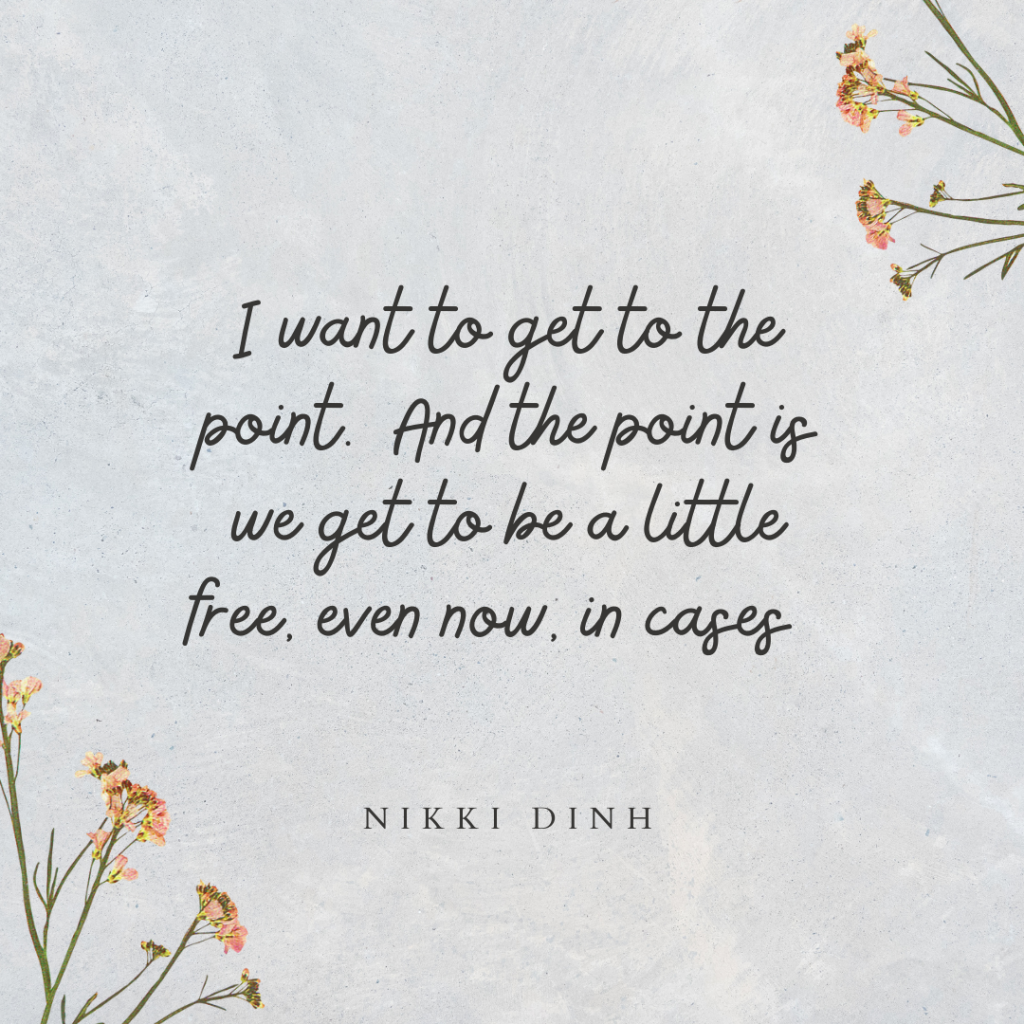
What's one thing that that Network Weaver, or even LLC is doing differently, to transform the field of leadership?
Ericka: We are shifting towards a different lens that asks: what does a collective liberation look like? What does it mean when we free ourselves and each other? That’s one change. We are also getting clear about what these questions around equity, liberation and transformation mean in different contexts. LLC is mostly domestic, whereas Network Weaver is international and therefore has a broader reach. Networks are not just interesting tools, but they actually result in change. How can we explore what a change ecosystem looks like and the role leadership plays in that? How can really thinking about the needs of varying stakeholders, and not just being focused on terms and buzzwords that are exciting, help us capture all the work that goes into the change process? How do we support the leadership of all of those other folks who are in that ecosystem? Holding space for those questions and others is one way I think we’re committed to doing things differently.
What is your vision for Network Weaver?
Nikki: Network Weaver is a tool and resource. Ericka and I have this analogy about pollination. In areas where bees and butterflies and all the natural super pollinators are dying off, there are efforts to self-pollinate or find other ways to pollinate. And that's why Network Weaver is so valuable to me. It's like an artificial butterfly. It’s trying to help solve a crucial short-term problem until we can get that butterfly population back up. It’s a useful tool to scale when we need to scale, but how can we also pay attention to what makes bees and butterflies thrive in the natural habitats because the goal always is to have natural networks. Growing up in a refugee community, we had a large cultural network and within that so many alternate systems to meet the needs of the community. You need to borrow money? You need prescription pills? There were people doing that for each other! I envision us also zooming out to see and appreciate a natural network of weavers that continue to connect and build alongside the Network Weaver space.
What's your vision for LLC?
Ericka: Oh, we have lots of ideas and hopes and dreams for LLC! Something that I hope doesn't change is that LLC is very relational. LLC is very people-focused, we care about people. It’s also a space that welcomes joy. And that's something we want to grow into. A vision that I have for LLC is that it is a space where people who want to lead in liberatory ways, and folks who want to support leadership that is transformational and liberatory, can collaborate. We are a space of experimentation, innovation, and community. I hope as a consequence of our work, that there are stronger movements for justice.
One of the things that I appreciate about LLC is that we are eco-centric rather than egocentric, which is something that our founder, my predecessor, used to say frequently, and I really value not having to make sure everyone knows that “it's us.” It’s more important that the work happened, rather than the credit be attributed to us. That focus on the communal, the collective, the ecosystem is something that remains part of the vision that I have for LLC. Our work has not just been about products and deliverables, but liberatory processes, and that has made the work fulfilling and joyful.
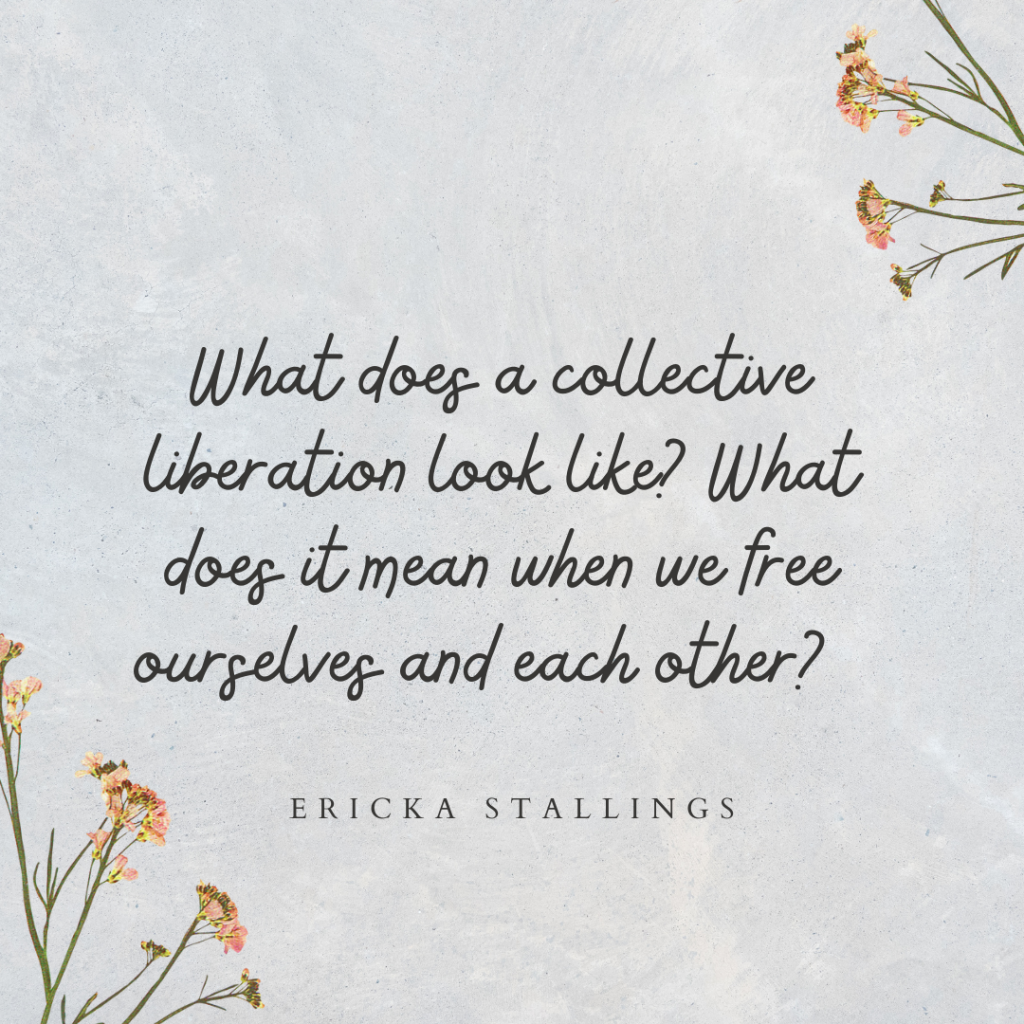
What’s a commitment you made to yourself during the pandemic that you intend to keep?
Nikki: I have made a commitment to root for me. It’s still a journey. I am surrounded by people like my sisters, my partner and my children, my collaborator Ericka, who think I'm so great. And I want to take on some of that energy and be like, I'm going to do it for me. And that's what has really emboldened me to be like, alright, look, we're doing liberatory work, we're gonna go there, because, you know, I was a lawyer—I know you can’t undo that kind of systems thinking overnight. I’ve had to work on this and believe in valuing this. And I've also known, because of my upbringing, that we can do better. So rooting for me is rooting for all folx entrenched in systems, for us to be a bit freer.
Ericka: One, I mean I have one commitment that I've made that is unexpected. And it's a group of women that I have coffee with, like virtual check ins with weekly.. We've been doing it since the beginning of the pandemic. The funny thing is we were not intimate friends before. We started this gathering to have regular conversations with agendas and learning goals and things like that, and they evolved or de-volved, depending on how you think about it, into very, very rich, deep emotional connections. I'm very proud and happy that I've continued to commit to these weekly check ins and also to those relationships.
Is there anything that you're like most excited for this year?
Nikki: We're doing some longer-term strategy work. In the next three to five years we will go bold with liberatory programming. Our lens for Network Weaver, for example, will be situated under the liberatory program side of the house. Everything we do will have to bring a kind of outside-the-system thinking which includes bringing in the perspectives and interests of people who are typically excluded from our systems. That said, I'm really excited to work with more people who are from other backgrounds, like refugees and trans folks, and queer folks, and people with disabilities. I have learned so much from people outside of our systems that I'm really excited for others to get that wisdom too.
Why LLC? Why Donate Now?
Ericka: One of my favorite quotes is: “if you give me a fish, you have fed me for a day. If you teach me to fish, you have fed me until the river is contaminated or the shoreline seized for development. But if you teach me to organize, then whatever the challenge, I can join together with my peers and we will fashion our own solution.”
With that in my mind, my hopes for the ongoing work of LLC and Network Weaver are in that vein; of prioritizing the people who are addressing issues in their communities and how folks in this space are supporting them. I'm hoping that the blog series we hope to launch soon will address how people are affirmatively and explicitly stepping back so that the people directly impacted come to the forefront. And I'm hoping these stories about the material, communal, and spiritual transformation that's happening help us see the real impact people are having on the communities they care about.

donate in the box above or click here

Ericka Stallings is the Co-Executive Director of the Leadership Learning Community (LLC) a learning network of people who run, fund and study leadership development. LLC challenges traditional thinking about leadership and supports the development of models that are more inclusive, networked and collective. Prior to LLC, Ericka was the Deputy Director for Capacity Building and Strategic Initiatives at the Association for Neighborhood and Housing Development (ANHD), supporting organizing and advocacy and leading ANHD’s community organizing capacity building work. Ericka also directed ANHD’s Center for Community Leadership (CCL) which provides comprehensive support for neighborhood-based organizing in New York City. At ANHD she formerly directed the Initiative for Neighborhood and Citywide Organizing (INCO), a program designed to strengthen community organizing in the local neighborhoods. Before working at ANHD she served as the Housing Advocacy Coordinator at the New York Immigration Coalition (NYIC), managing its Immigrant Housing Collaborative. In addition, Ericka co-coordinated the NYIC’s Immigrant Advocacy Fellowship Program, an initiative for emerging leaders in immigrant communities. She received her undergraduate degree from Smith College, studied International and Intercultural Communications at the University of Denver and Urban and Environmental Policy and Planning at Tufts University.

Nikki Dinh is the daughter of boat people refugees who instilled in her the importance of being in community. Though she grew up in a California county that was founded by the KKK, her family’s home was in an immigrant enclave. Her neighborhood taught her about resistance, resilience, joy and love.
Her lived experiences led her to a career in social justice and advocacy. As a legal aid attorney, she learned from and represented families in cases involving immigration, domestic violence, human trafficking, and elder abuse. Later, she joined the philanthropic sector where she learned from and invested in local leaders, networks and organizations throughout California. At Leadership Learning Community, she is excited that her work will continue to be guided by the belief that the people in communities we seek to serve are best positioned to identify and create solutions for their community.
About the Author

Sadia Hassan is a writer, organizational consultant and network weaver who enjoys using a human-centered approach to think through inclusive, equitable, and participatory processes for capacity building. She is especially adept at facilitating conversations around race, power, and sexual violence using storytelling practice as a means of community engagement and strategy building. She has received a Masters in Fine Arts, Poetry at the University of Mississippi and a Bachelor of Arts in African/African-American Studies from Dartmouth College. You can read more of her work at Longreads, American Academy of Poets, and The Boston Review. https://sadiahassan.com
feature photo by Lee 琴 on Unsplash
Networks: Resourcing Relationships and Interdependence for an Equitable Future Now
Networks for Equity and Systems Change
The events of the past year have made clear what many in and outside of philanthropy already knew: that equality in resource distribution is not equity, that much of what was thought impossible to change – telework policies, reporting requirements, fiduciary responsibilities – is suddenly possible, that what we need to shift big systems is interdependence (not codependence), and that what is needed for this shift to happen begins with strengthening our relationships with one another – as individuals, organizations, and communities.
Networks offer a structure for linking people and groups of people with a shared vision and shared values to build and strengthen the relationships necessary to shift big systems. By offering us opportunities to work together in ways that challenge us to build different understandings of and relationships to power and to each other, we are able to move in more interdependent and interconnected ways.
Many individuals and organizations – particularly those rooted in Black and Native communities, queer communities, and immigrant communities – have experience working in networks both rooted in and working to advance equity and justice yet are often not sufficiently resourced for this work. Other entities, including many funders, are bringing increased attention and resources to working in this way and yet these many groups that are poised to resource networks are still just learning about how to do so in ways that align with equity and manage disproportionate power dynamics.
In this moment of possibility for reimaging big systems to live our imagined future of love, dignity, and justice now, we are sharing some learning from a late-2019 gathering of nearly 70 network funders, practitioners, and participants about how network practitioners and some funders are nourishing and growing networks for equity and systems change.
An Experiential and Embodied Approach to Learning in Networks
The Networks for Equitable Systems Change gathering was co-created in partnership with Change Elemental, Uma Viswanathan and Matt Pierce at the Robert Wood Johnson Foundation, and a design team of network practitioners including Allen Kwabena Frimpong, Aisha Shillingford, Marissa Tirona, Robin Katcher, and Deborah Meehan. The group came together to engage with practices for building, resourcing, and sustaining networks. Together, we set out to learn about the following questions:
- How have funders and other organizations worked together in networks that promote equity and systems change?
- What are the barriers to resourcing networks for equitable systems change and what would it take to shift those barriers?
- What is the personal work and way of being needed to fully engage in networks, equity and systems change?
While desk research and interviews can be useful learning tools, we decided to take an experiential and embodied approach to learning about our questions. By bringing convening participants into the experience of network building in real time, we were able to create shared experiences that led to shared understanding about what it takes to build and sustain networks that can shift systems.
We can’t shift systems when we’re only touching one part of the elephant. We need spaces where the whole ecosystem comes together, bringing various perspectives that can give us a picture of the whole. Rather than host separate conversations with funders, intermediaries, and grassroots organizations, the gathering brought together many parts of network ecosystems to discuss how folks were experiencing power sharing within networks.
Below are some of the ways the experiential design of the convening – in addition to the deep expertise and knowledge that participants brought to bear – helped co-create our elephant and answer some initial questions about networks…
We Challenged Dominant Ways of Building Alignment through Rigid Frameworks and Definitions and Instead Reached Shared Understanding with Storytelling
Through experiential learning and storytelling, convening participants aligned on shared definitions for what we mean by a network as well as successful practices for building, sustaining, and resourcing networks.
With our design team, we co-created a learning network that engaged people with different access to resources, different kinds of power, and different experiences and roles in networks. We were concerned about bringing so many different folks together to talk about networks when we all were coming in with these different experiences, definitions, etc. We faced the same pressure points that networks face: how do we distribute resources across this group and compensate people for their time and labor? How can we facilitate more open discussions with transparency and deeper sharing among groups who have different priorities, expertise in networks, roles in the movement ecosystem, and kinds of power? Where do we need alignment and shared definitions and where should we hold generative tensions and conflict?
Initially, we considered aligning the group through some shared definitions and research in networks before coming together, but that process seemed time consuming and didn’t fully honor the wisdom in participants’ different perspectives and experiences. Instead of creating written definitions and a compilation of research to align participants on a common framework, we had attendees prepare spark stories – a short story that communicated their experiences and challenges in a network when working across funders, individuals, grassroots organizations, and other entities. Participants shared stories in small groups and each group created an image to show similarities and differences in themes across stories. The storytelling accelerated shared understanding in small groups and highlighted the multiple perspectives in how participants understand and experience networks.

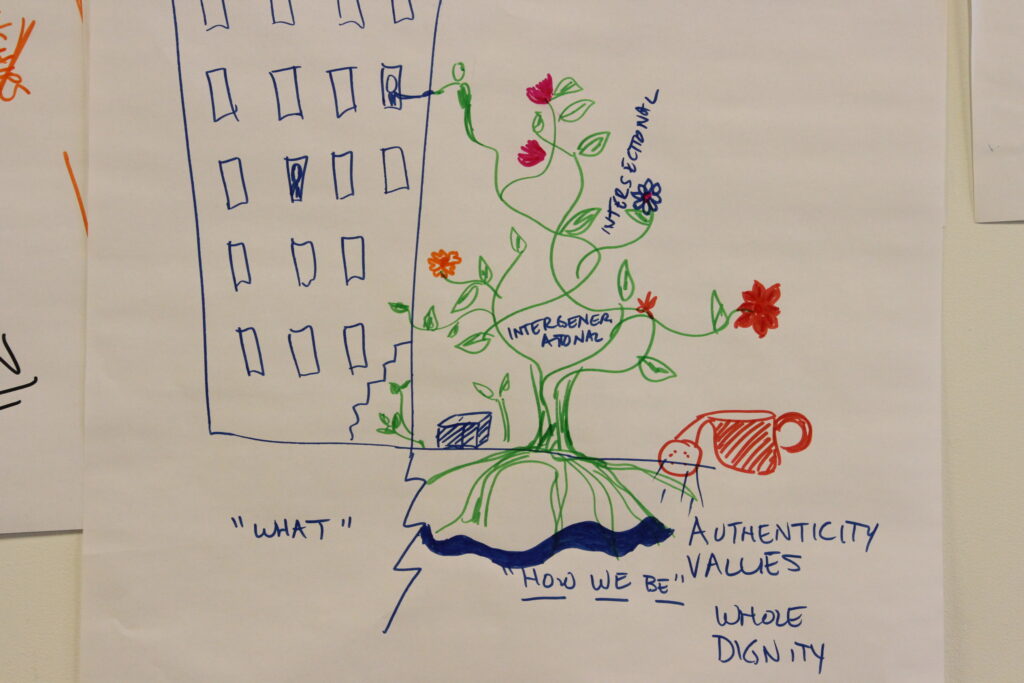
Many participants also shared their spark stories in video conversations. In this video, design team member Allen Kwabena Frimpong and Rachel O’Leary Carmona from AdAstra Consulting share their own definition of a network.
We Used Art Making to Illuminate Power Differences and Start Deeper Conversations about Power Sharing in Networks

Navigating power differentials – including naming and managing them – was a key element in supporting shared learning in this diverse space and also mirrored the ways in which engaging with power can create generative conflict that supports network building or exacerbates unnamed tensions that derail it.
At one point before the convening, some funders were feeling nervous about their power relative to other groups and considered having a separate space. We ultimately decided against that and instead brought funders together to discuss how we might acknowledge and visibilize power differentials (rather than obscure them). We also saw this as a way for funders to build practices for being in spaces where they have more power related to resourcing (such as in a network).
In an exercise from Theater of the Oppressed participants could make visible the power differences between funders that financially resource networks and other network participants. Participants positioned chairs differently based on their vantage point and each new sculpture was in dialogue with the previous one, creating space for different perspectives in support and in tension with each other.
In this spark story, Sage Crump, Cultural Strategist, shares her experience with power as an intermediary navigating the relationships between networked organizations and funders.
Starting with this creative exercise created a bridge to harder conversations about the barriers to equity in resourcing networks such as how money is distributed across network participants, inappropriate use of power, or challenges that come up when there is misalignment between the equity values of a network and the culture of a funding institution.
Convening participants Eugenia Lee of Solidaire and Rajiv Khanna from Thousand Currents discuss what it takes for people inside large funding institutions to align foundation culture with equity and other values needed to better support networks.
We Made Space for New Conversations about Resource Sharing and New Processes for Resource Distribution
Equity should inform how we resource people to be and learn together across power, identity, and roles and then to do together (in networks). Yet external systems, norms, and habits can often inhibit us from living out our values. One example of this is the radical redistribution of resources in neworks, which requires leaning into new practices for how we work together and support each other given our proximity to power and resources.
To financially support people’s attendance at the gathering and their contributions to the space, we created an equity fund. The set-up and distribution of the convening’s equity fund provided the group with an opportunity to lean into these new ways of being. It required vulnerability from participants in asking for what we need and for those holding financial systems to figure out creative ways of reducing the administrative burden on participants, for example by offering stipends rather than reimbursing receipts.
To guide us in these new (to some) ways of being and doing, we created a set of fund principles. Adapted from Leadership Learning Community, the principles included:
- People can ask for what they want and need
- Adopt an abundance mindset (we can always find a way to get more)
- Function with trust, no questions asked
- Give people examples of what they might use funds for (e.g., lodging, childcare, funds to cover a missed day of work for hourly professionals, etc.)
At first, people asked for very little. After more enthusiastic nudges and encouragement to lean into the principles and the discomfort of asking (for example, by looping back to confirm, clarifying our equity principles, and sharing more examples of what people have asked for) more participants felt comfortable asking for what was truly needed.
The initial hesitancy from participants prompted us to think more about who feels entitled to ask for equity funds and how that may relate to our individual sense of worth (eg. how much do I really need this?) and relationship to the collective (e.g., how much might others need relative to me?).
During the convening, we shared what we learned from managing our equity fund in this meme-filled presentation, including how we pushed for a “no receipts” policy, which was challenging to navigate from a compliance perspective but saved a great deal of administrative time.
In this spark story, convening participants Elissa Sloan Perry from Change Elemental and Alexis Flanagan from the Resonance Network share another example of resource distribution within a network, including the vulnerability and trust needed to talk openly about personal wealth as a way towards more equitable resource distribution.
While some of the experiential learnings from the convening are captured above, network practitioners and funders also brought together learnings from past experiences in leading with equity and navigating power differentials within networks including how funders operate in networks; the different forms and shapes networks might take; capacity, impact, and infrastructure needs in networks; and ways of being needed to build, resource, and support networks.
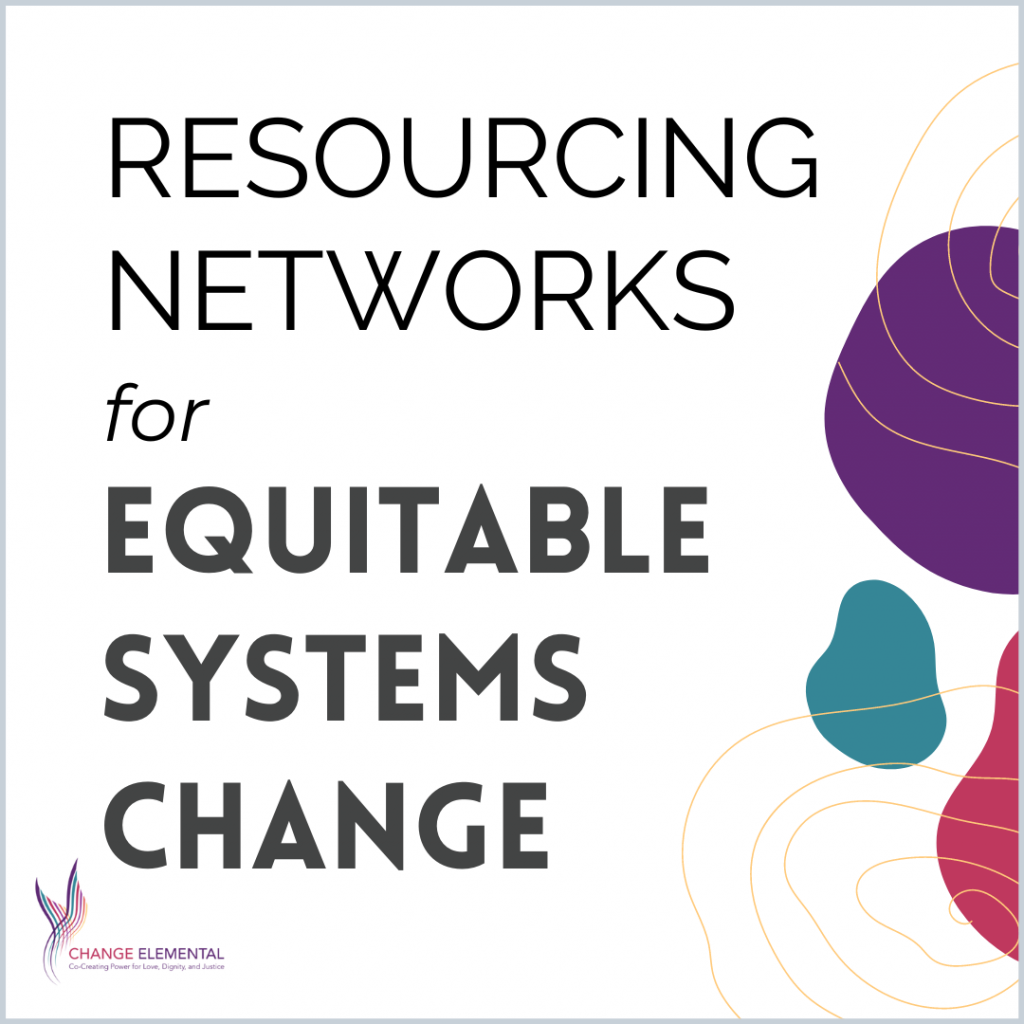
To dig into more stories and insights as well as many other resources about networks, see the report, “Resourcing Networks for Equitable Systems Change: Perspectives from Funders, Intermediaries, Individuals and Organizations on How We Fund and Support Networks for Equity.”
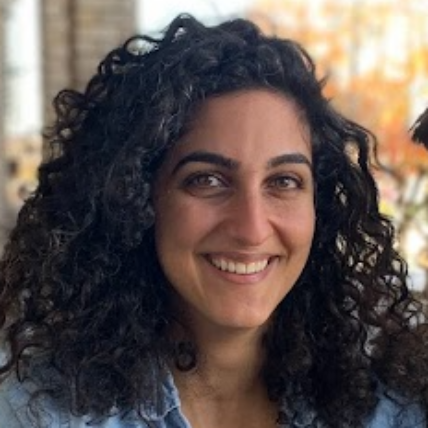
Natalie Bamdad (she/her/hers), joined Change Elemental in 2017. She is a queer and first-gen Arab-Iranian Jew, whose people are from Basra and Tehran. She is a DC-based facilitator and rabble-rouser working to strengthen leadership, organizations, and movement networks working towards racial equity and liberation of people and planet.

Alison Lin (she/her/hers) supports leaders in authentic collaborations to transform people and systems toward love, dignity, and justice. With over 20 years of leadership experience, she draws from work in race equity, complex systems change, organizational development, learning through experimentation and life with a focus on issues affecting LGBTQ and BIPOC communities. She joined Change Elemental in 2017.
Video recording, editing, and photos by Breathe Media Group
Graphic recordings by Brandon Black
Cover photo by Brian Stout
Originally published at Change Elemental

Network Weaver is dedicated to offering free content to all – in support of equity, justice and transformation for all.
We appreciate your support!
donate in the box above or click here
The illusion of hopelessness
The war in Ukraine is a symptom of something bigger— and within reach
In times of war, we are led to believe we are powerless.
We are told that violence is inevitable, an unfortunate part of the way things are. And that the way things are cannot change.
As world events have transpired over the last two weeks, this illusion has begun to splinter
* * *
Russian military forces invaded a sovereign nation on February 24th. Within days, the United States, the European Union, and other nations announced a series of economic sanctions on Russia. At the same time, countries of the European Union waived visa rules for Ukrainian refugees–allowing those fleeing war to enter the EU without having to seek asylum.
Homes across Europe have opened their doors to Ukrainians fleeing war, and President Biden announced that Ukrainian refugees would be welcome in the US “with open arms.”
These moves were swift and unprecedented. Rules that had long existed were replaced with new ones. Systems changed as people and countries moved together in response to a humanitarian crisis.
How quickly rules can change when we want them to.
How malleable systems can be when we agree on what is right.
* * *
Russia’s attack on Ukraine, like all wars, is a symptom of a worldview of domination and extraction.
Like all wars, it exists amid other symptoms and consequences of this worldview: modern dependence on oil and the interests of the fossil fuel industry; unmistakable racism at the Ukrainian border as Africans were systematically turned away.
And the global coordination to condemn Russia’s attack and support the Ukrainian people was made possible, in part, by white supremacy: Western sensibilities were stirred by seeing white refugees. Meanwhile, escalating humanitarian crises in Afghanistan, Palestine, Yemen, Syria, Somalia, and Ethiopia have not been met with the same swiftness.
Imagine a world where all people in need were met with dignity and humanity. Where violence and harm was met with resounding care.
Imagine systems of governance that hold these values above all others.
* * *
In times of war, we are led to believe we are powerless by those who benefit from our silence. We are led to believe our collective systems cannot change by those who benefit from the way things are. Meanwhile, worldviews of domination and extraction continue to shape our reality and perpetuate harm.
As the war in Ukraine has unfolded, we’ve also seen a wave of dehumanizing legislation against queer and trans young people, increasing threats to reproductive justice, and an alarming epidemic of homelessness continuing in the US, all while COVID cases spike in Europe and Asia.
When we understand that all violence is a symptom with the same cause, we can also see that we are not just spectators to what is happening — in Ukraine or right beside us.
There is hope, and the hope is us.
* * *
“There is never time in the future in which we will work out our salvation.
The challenge is in the moment; the time is always now.”
~James Baldwin
Resonance Network is a national network of people building a world beyond violence.
Originally published 3.16.22 at Reverb
THE TAPESTRY: Weaving Life Stories
You are invited to listen to The Tapestry Podcast.

The podcast is about bringing people together to explore the rich, woven textures of our narratives. Our stories are impactful and in listening to the stories of others, we learn more about our own power, claim our purpose and pursue our passion. The fabric of our lives as women is strong, resilient and when we come together, we can make a beautiful piece of work to inspire, support and sustain our personal and professional lives. Although designed for women 50 and above, the wisdom shared is ageless. Join us as we share, laugh hysterically, cry, and keep it real all at the same time.
Some of The Tapestry's most recent episodes include:

THE STORIES BEHIND THE DATA - Meme Styles
In 2015, Meme Styles founded MEASURE to promote the use of evidence-based projects and tools to tell real-life stories behind the numbers. As a catalyst for systems change, MEASURE has grown to a fully operational nonprofit social enterprise that provides free data support to Powerful Black and Brown-led communities. So far the organization has provided over 3000 free data support hours to Black and Brown - led organizations.
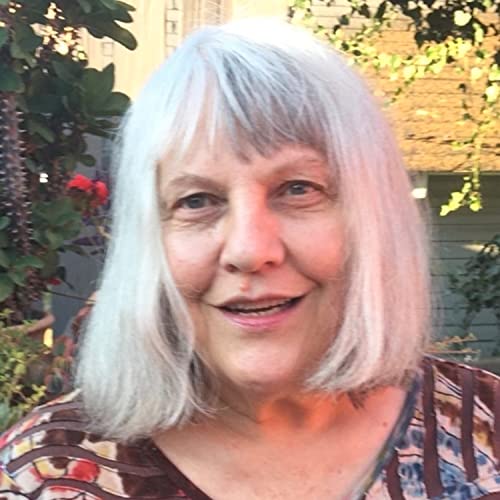
CREATING A PERSONAL NETWORK FOR TRANSFORMATION -- June Holley
June Holley has been weaving networks - and helping other learn to weave networks – for over 40 years. Much that she learned is included in The Network Weaver Handbook, 400 pages of simple activities and resources for Network Weavers. She also created www.dev.networkweaver.com, a site with many free resources and a blog authored by over 40 network weavers.

BOUNDARIES IN BUSINESS AND IN LIFE FOR 2022 - Kimberly Oneil
Kimberly O'Neil is an award-winning professor, executive leader, and social good expert. She was the youngest serving African American woman City Manager in the United States. As a veteran senior government and nonprofit executive, Kimberly has used her voice to impact policy decisions while lobbying in New York City and on Capitol Hill. She now works within the social sector and leads Giving Blueprint, a consulting company with a mission to impact social change through the development of strategic partnerships and growth plans within the social sector.
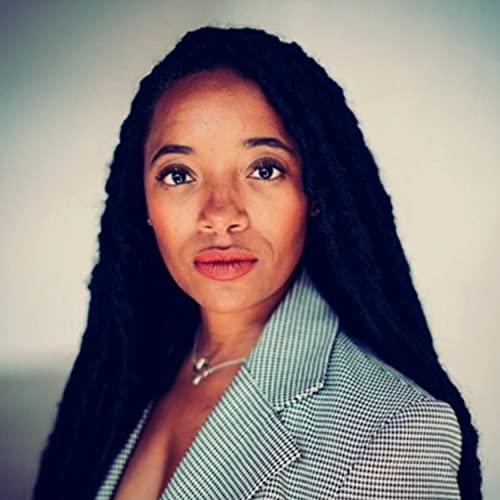
CRITICAL CONVERSATIONS ABOUT RACE - Amber Sims
Amber currently serves as the Executive Director of Young Leaders Strong City, a nonprofit focused on youth development, leadership, and racial equity. She was formerly the Director of Regional Impact for Leadership for Educational Equity, an educational nonprofit focused on leadership pathways in civic engagement. Previously, Amber led workforce development at Workforce Solutions Greater Dallas Opportunity Center. Her theory of change was to emphasize the connection between education, workforce, and dual generation impact.
Other guests have included:
- Dallas Maverick CEO and President Cynt Marshall
- Leah Frazier , 2-Time Emmy Award-Winning and 10-Time ADDY Award-Winning entrepreneur
- Paula Stone Williams, internationally known speaker on issues of gender equity, LGBTQ advocacy, and religious tolerance
- Rafia Zakaria, author of Against White Feminism (W.W. Norton, 2021) and Veil (Bloomsbury, 2017) and a writer for the Guardian, Boston Review, The New Republic, The New York Times Book Review and Al Jazeera America
- Gretchen Bauer, Luxury handbag manufacturer
Find all The Tapestry episodes HERE
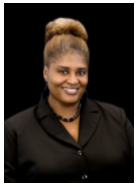
Dr. Froswa’ Booker-Drew is a Partnership Broker. Relational Leadership Junkie. Connector. Author/Speaker/Trainer. Co-Founder, HERitage Giving Circle. Currently, the Vice President of Community Affairs of the State Fair of Texas, she has been quoted and profiled in Forbes, Ozy, Bustle, Huffington Post and other media outlets around the world. In addition, she has been asked to speak on a variety of topics such as social capital and networking, leadership, diversity, and community development to national and international audiences. This included serving as a workshop presenter at the United Nations in 2013 on the Access to Power.
featured image found HERE

Network Weaver is dedicated to offering free content to all – in support of equity, justice and transformation for all.
We appreciate your support!
donate in the box above or click here
Value and Impact of the Purpose Built Community of Practice
Knowledge Communities, in collaboration with Purpose Built Communities, have released a white paper (that you can download below) telling the story of Purpose Built’s successful and compelling journey to adopt and implement a Community of Practice (CoP) strategy to support neighborhood revitalization and racial equity. Specifically, the paper describes the Purpose Built CoP startup process, the status of the Purpose Built CoP as of early 2021 and success factors to date. Finally, the paper contains an appendix of tips for practitioners who support and manage CoPs and networks.
- Read about how the Purpose Built Community of Practice (PB CoP) successfully supported a network of change makers across the country during COVID and continues to support them on an ongoing basis today.
- Learn some practical strategies you might want to adopt as you build a community of practice.
- Understand why the PB CoP exemplifies best practices from which many can learn.
Communities of Practice bring together professionals who share a common set of challenges (e.g., Purpose Built Network leaders focused on place-based community development) on an ongoing basis to collaboratively solve problems and learn from each other.
Article Summary
Purpose Built Communities brings together Network Members — leaders and staff of organizations working to improve equity and opportunity in neighborhoods across the country — in a networked Community of Practice (CoP) structure. Knowledge sharing and collaboration helps local leaders in the Network tackle the complex challenge of intergenerational poverty to achieve racial equity, improved health outcomes and upward mobility for residents.
In 2019, with the generous support of the Robert Wood Johnson Foundation, Purpose Built Communities began moving from a hub-and-spokes structure (with Purpose Built serving as the hub), to a Community of Practice, also known as a networked model.
The Purpose Built Community of Practice stimulates problem recognition, and the creation, exchange and application of innovations to serve place-based neighborhood revitalization that moves people out of poverty.
The CoP’s structure and interactions help Network Members:
- Build stronger relationships with supportive peers
- Accelerate knowledge sharing
- Respond rapidly and flexibly to changes in circumstances
- Shorten learning curves to gain skills and expertise fundamental to Network Member excellence
- Successfully implement the Purpose Built Communities model
- Make informed decisions that create stronger outcomes
For more information, read the full white paper, “Value and Impact of the Purpose Built Community of Practice: 2019-2021″
Access the paper by downloading the resource at Network Weaver HERE or at Knowledge Communities's website HERE.
The mission of Knowledge Communities is to create environments that optimize:
- Trust building
- Collaboration
- Synergy
- Knowledge Sharing
- Generative Behaviors
- Harness the productive dimensions of power and competition in the service of improving lives and bettering the world we live in.
Originally published at Knowledge Communities

